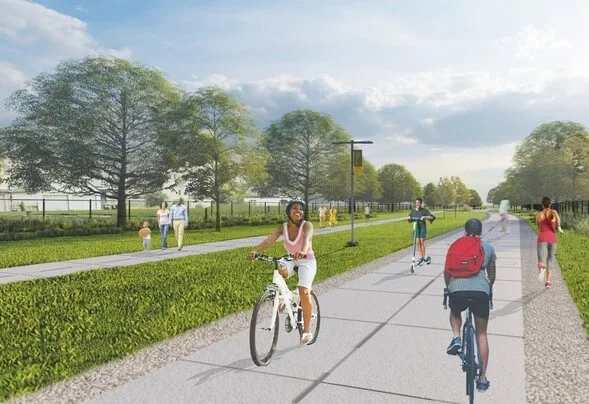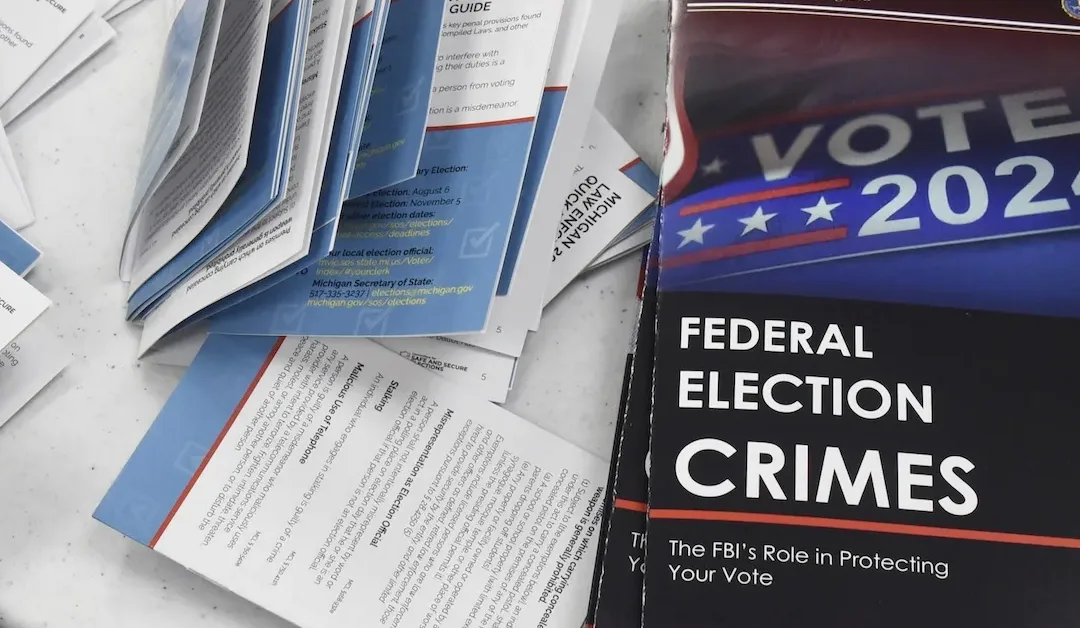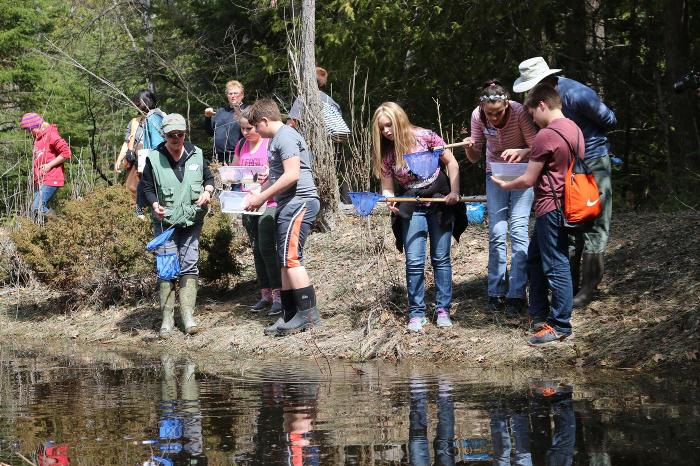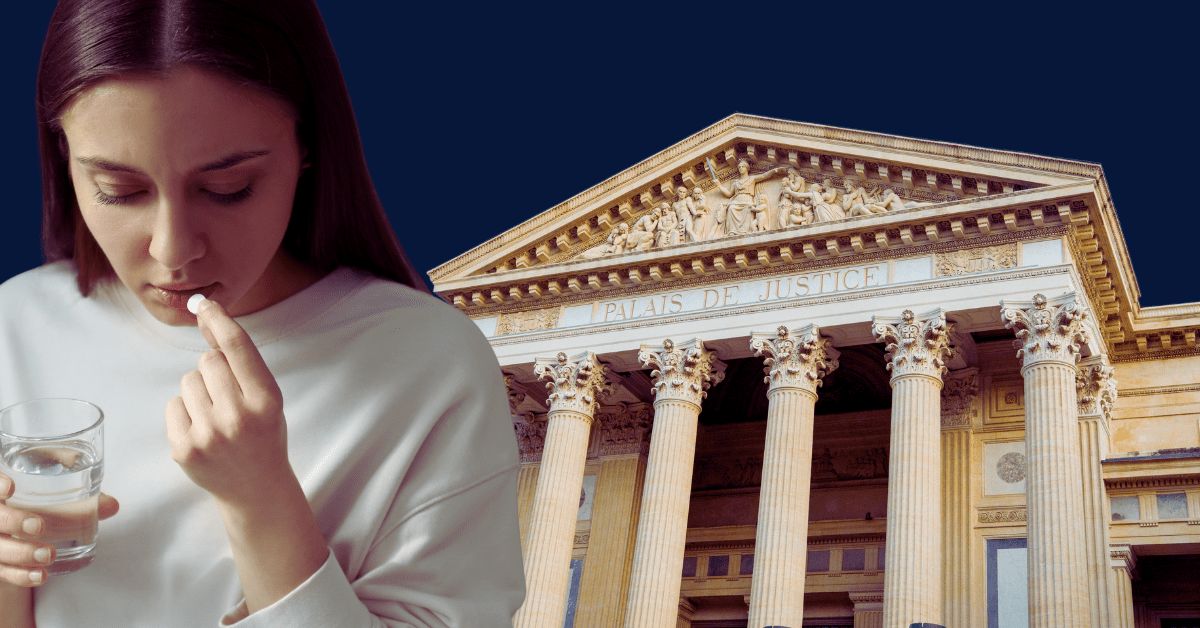
Stick with me here: Let’s say you own a bicycle time-machine—a rusty single-speed cruiser with a bell on the perfectly sloped handlebars, and when you peddle backwards and ring the bell, you’re transported anywhere in the world at any period of time. Now, with your wish in mind, where would you go?
There’s no wrong answer. Paris in the 18th century would be awe-inspiring, a fomenting revolution in the streets gazing upward at pristine palaces and castles. Constantinople is a personal favorite, the crossroads of culture as the silk road spanned two continents.
But amid many historic cities of wealth and grandeur, 1950 Detroit is at the top of the list for me.
Leading into and throughout the 1950s, Detroit could match all the greats—nearly two million people, brimming with affluence, beautiful American-made classic cars commanding the streets. At 26, I envy anyone who was alive to see it.
What makes Detroit such a time-traveler’s dream destination is the height of contrast. By the mid-1900s, Detroit was quoted as the per-capita richest city in the US; it recently clocked in at the second-poorest. Ruins remain as reminders of the wealth that once existed—like an American Rome. Drive down Grand Boulevard and you’ll see the makings of Motown, where historic two-story homes became the office buildings and recording studios for America’s favorite music. Now, just behind the museum, an old commercial corridor strikes the pose of a ghost town, save for tumbleweeds. Whenever I spin down Holden Street, my imagination races.
To be clear, I am not trying to “dunk on” modern Detroit. I live in the (actual) city. And I love it — not just for the downtown improvements but for what it is and what it represents. In very few major city markets do people know their neighbors, but they do in Detroit.
On the first 70-degree day of the year, I had to go on a bike ride. In a neighborhood just north of New Center, I rode by an elderly lady sitting on a bench and we exchanged pleasantries for long enough that I wheeled back around, stopped pedaling, and pushed down my kickstand, shifting gear into conversation. While waiting for a ride from her brother, she regaled me with school memories of members of the Supremes and the Four Tops. Detroit had changed a lot since then, but she was still here, with her husband who she met around high school.
Behind where she sat was a park her cousins had built from the ground up. It wasn’t a public park, not technically; it was an abandoned private lot of some age that they had revived for the neighborhood. After it had sat empty for years, community members decided to bring in a makeshift basketball hoop, some grills, some wooden benches, and a slide for the kids. They expect to get kicked out sooner or later since it’s not technically theirs, but until then, there’s a park in the neighborhood.
Though that may be my favorite example of reclaimed public spaces, it’s far from the only one. See Sherwood Forest. See the Monroe Street Midway. After nature reclaimed so much of Detroit, residents have reclaimed so much of nature.
My favorite pastime in Detroit is wheeling around on that Gary Fisher fixed-wheel bike. I’ve loved riding here since I was in college, after I got over the Detroit fear-mongering that was spoon-fed to an out-of-stater. Quickly, I realized, I could bike 10 miles in any direction, unbothered by the rare passing car, which would skip a lane over to make ample room. When you have three to four lanes on either side of a street that few cars use, you can cruise anywhere you’d like.
These days in Detroit, we even have protected bike lanes, with white reflective posts called “bollards” dividing the land of two wheels from that of the four.
For so much room to ride, I have Detroit’s elaborate interstate and highway system to thank. After all, that’s what made these six-lane boulevards and avenues that my bike now calls home essentially defunct. When you could hop from one freeway to the next, there becomes less functional need for city streets—and, sadly, that’s what became of the businesses there and the community around them. Highways galore made commercial streets no more.
Detroit’s sprawling and webbed interstate system is what I and many urban enthusiasts believe drove people away from the city even before the manufacturing jobs left—the promise of a suburban life still within driving distance of the economic engine. From the 1950s to the 1970s, construction was completed on I-94, I-75, and I-96. Even before then, the auto industry had brought the Davison Freeway to fruition–the nation’s first urban freeway.
But there’s another reason these boulevard and avenue routes are so natural for biking: It’s in their bones.
In 1868, the Detroit Free Press recorded the city’s first bike ride. A famous newsman at a competing publication, Ben Fletcher mounted a velocipede, the earliest version of a bicycle that had its rider sitting higher than the shoulders of onlookers. Literally and figuratively propped up by a crowd running alongside him, Fletcher swerved through the streets as gracefully as a grocery cart with three working wheels. Reactions covered in the paper conveyed shock and awe, as some dismissed the thought that man-powered transportation could ever catch on. But hey, Detroit’s always had haters.

With streetcars, horse-drawn carriages, and heavy pedestrian traffic already redefining old walking trails, Detroit’s pathways were ideal for early cyclists—even if they scraped along on steel wheels that the city’s cobblestones filed down over time.
Then, in 1893, the Michigan League of American Wheelmen persuaded the state legislature to pass a county roads law that endowed county road commissions with the right to use millages and funds to improve local roads. By 1895, the streets were solid enough that even the Detroit Police Department was on bikes. Races and social rides took to the streets. The Unique Cycling Club popped up, just for women riders. Detroit became known as one of the best cycling cities in the US, by all accounts.
With just a little research, it’s impossible to ignore that historical Detroit’s passion for cycling is in large part to thank for Michigan becoming the auto capital of the world. Cyclists here founded the Good Roads committee, and HS Earle, its leader, went on to start the Michigan Department of Transportation.
“The bicycle is to be given credit, not only as the pioneer of the good roads movement but also as the parent of the automobile,” Earle said.
Now, for a little bit of name recognition. The Dodge brothers? First cyclists, second car-makers. Louis Chevrolet? First a cyclist, second a car-maker. Henry Ford? Yes, him too.

Time travel forward to 2015. That year, Detroit had been ranked far and away the worst in the country for pedestrian fatalities, and momentary improvements were quickly offset by a higher number of fatal crashes during COVID-19. Now, drivers are going faster on our interstates and highways (“The Lodge,” America’s autobahn, is evidence), and their reaction times aren’t enough to spare pedestrians and cyclists from a ton of metal lurching forward. Thankfully, we’ll soon have a “flex” lane for I-96; nothing like more car infrastructure to fix that problem.
Yet according to Census data, nearly a quarter of households in the Motor City don’t have access to a vehicle. Needless to say, if a heralded comeback is to truly arrive to the city, Detroit residents need reliable transportation. Yet, according to a 2021 study by LawnStarter, Detroit ranked at the bottom of the list of cities to live in without a car.
Now, for a little bit of name recognition. The Dodge brothers? First cyclists, second car-makers. Louis Chevrolet? First a cyclist, second a car-maker. Henry Ford? Yes, him too.
This isn’t strictly a Detroit story. Cities across the US have experienced back-breaking population losses that left their roads and sprawl fitting like a loose shirt. Every metropolitan community in Michigan has their own story, but in mine, suburbanization reads like an unraveling ball of yarn: concentration of the auto industry led to highway expansions that led to displacement that led to further sprawl that led to economic centers far from the city that led to… you get it. Emptiness.
With so much space in our city centers, what do we do with it all?
We might take a lesson from the many big and small American cities that have embraced devoted cycling spaces, not shared roads but places where only bikes and pedestrians belong. In Detroit, these are few and far between–the Dequindre Cut and Riverfront (recently voted again as the best riverfront in the nation, and currently expanding) serving as the top examples, but neither providing the length for meandering or sweat-pouring, soul-cleansing rides. The Dequindre Cut is less than two miles; the riverfront route is disjointed.
According to Census data, nearly a quarter of households in the Motor City don’t have access to a vehicle. Needless to say, if a heralded comeback is to truly arrive to the city, Detroit residents need reliable transportation. Yet, according to a 2021 study by LawnStarter, Detroit ranked at the bottom of the list of cities to live in without a car.
The good news is that Detroit is on a mission to create more green spaces for cycling already and to connect cycling routes with neighborhoods and the metro area. The poster project is the Joe Louis Greenway, which will be a 27.5-mile loop connecting various paths and loop Dearborn, Highland Park, and Hamtramck in the expansion.

For the city, the greenway will be transformative. It will flip the accessibility of the region from downtown-out to neighborhood-in, and greatly improve the safety of biking and walking in Detroit.
Flint, similarly, is getting a state park with trail connections. Grand Rapids and surrounding areas are getting their own greenways and trail expansions, too.
ALSO: Promise Fulfilled: Flint’s Makeover Continues With a New State Park
But as they grow, Detroit and other Lower Peninsula cities could pull double-duty by considering a neighbor to the north. Last year, I wrote a story about how Marquette, Michigan, is preserving its mining past and present through its outdoor recreation future. The Iron Ore Heritage Trail is a 47-mile-long museum on gravel and asphalt, showcasing 1900s furnaces and statues representing what the converted rail track symbolized to the region.
Detroit has plans to include art along the greenway as well. So here’s my pitch: Wouldn’t it be spectacular if the Joe Louis Greenway paid homage to the old Detroit—the cyclists-turned-automakers, the rise of rich Motown, and the Black neighborhoods that were steamrolled in short order to make room for the interstates?
More cycling spaces will be good, but reimagined uses of what was left behind will be better. Just like that neighborhood park, residents need to shape how they want the corridor to look. They’ve stayed with the city, and they know what it needs.
The truest way to know a city, after all, isn’t out a narrow windshield—it’s with an open panorama; a broader view than miles of asphalt.
For Detroit, greenways are a chance to show visitors and residents alike the stories passed down in our neighborhoods—the stories you can’t see from Davison or the Lodge or I-75. Maybe cyclists on Michigan’s greenways can discover time capsules they didn’t know existed, fall in love all over again with the ones they did, and become invested in those neighborhood ties that have, through the city’s many cycles, been paved over yet endured.
Politics

Whitmer expands clean water plan while enviros call for more clean energy investments
BY KYLE DAVIDSON, MICHIGAN ADVANCE MICHIGAN—As construction workers at the Delta Township Wastewater recovery facility continued efforts to expand...

Michigan Dems push for action on prescription drug board bills
BY KYLE DAVIDSON, MICHIGAN ADVANCE MICHIGAN—Four Democratic House members are renewing the call for action on prescription drug affordability,...

Local election workers fear threats to their safety as November nears. One group is trying to help.
TRAVERSE CITY—The group gathered inside the conference room, mostly women, fell silent as the audio recording began to play. The male voice, clearly...
Local News

These students are protecting the ‘coral reefs’ of Michigan—and you can too
Vernal pools are a critical part of Michigan’s natural ecosystem—but they’re not protected by state regulations. Here’s how Michiganders are...

The food at Comerica Park puts peanuts & Cracker Jacks to shame
Gone are the days when peanuts and Cracker Jacks were the most exciting food items at baseball games. Baseball stadiums around the country now boast...





